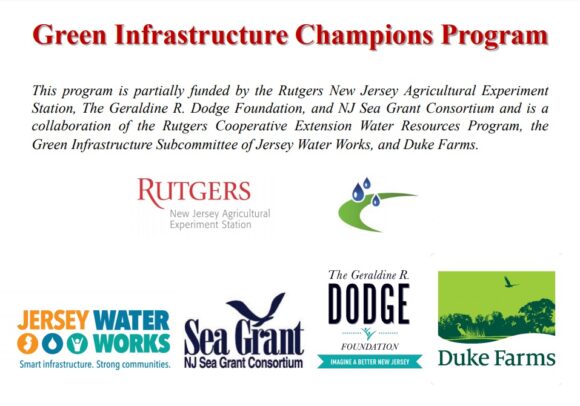 Green Infrastructure Champions is an extension program originally piloted in 2019 to empower local stakeholders to play a dominant role in encouraging their own municipalities to implement green stormwater infrastructure practices.
Green Infrastructure Champions is an extension program originally piloted in 2019 to empower local stakeholders to play a dominant role in encouraging their own municipalities to implement green stormwater infrastructure practices.
The Green Infrastructure Champions Program was offered for a third year in a row this past winter and spring. Ten unique and completely virtual educational sessions were offered from January through May 2021. The all virtual sessions expanded outreach beyond New Jersey, and registrants from as far away as Kansas City, KS to Saint Croix, USVI and San Juan, PR participated!
This Extension program continues to train and certify Green Infrastructure Champions to be able to: 1) enhance their knowledge through green infrastructure seminars and research, 2) engage community leaders to adopt green infrastructure as a stormwater management solution by updating ordinances and municipal master plans, 3) encourage local non-governmental organizations (NGOs) and schools to incorporate green infrastructure in their existing landscaping, 4) secure funding for green infrastructure, and 5) publicize the implementation of green infrastructure.
One hundred twenty-two participants completed five or more sessions to become certified Green Infrastructure Champions and leaders who can advocate for green infrastructure in their communities. Just like with the first and second years of the program, several Green Infrastructure Champions have begun to advocate for and implement green infrastructure projects in their own communities!
Here are the 2021 numbers:
· 10 training sessions (via Zoom) with an average attendance = 108
· # of people who attended at least one session = 226
· # of people who attended at least five sessions a.k.a. Green Infrastructure Champions = 122
· # government/municipal organizations = 92
· # NGOs/Partnerships/Nonprofit Organizations/Academic = 33
· # of private organizations = 25
To learn more about the Green Infrastructure Champions Program, please visit the website.
Note: this article originally appeared in the Water Resources Program newsletter.

